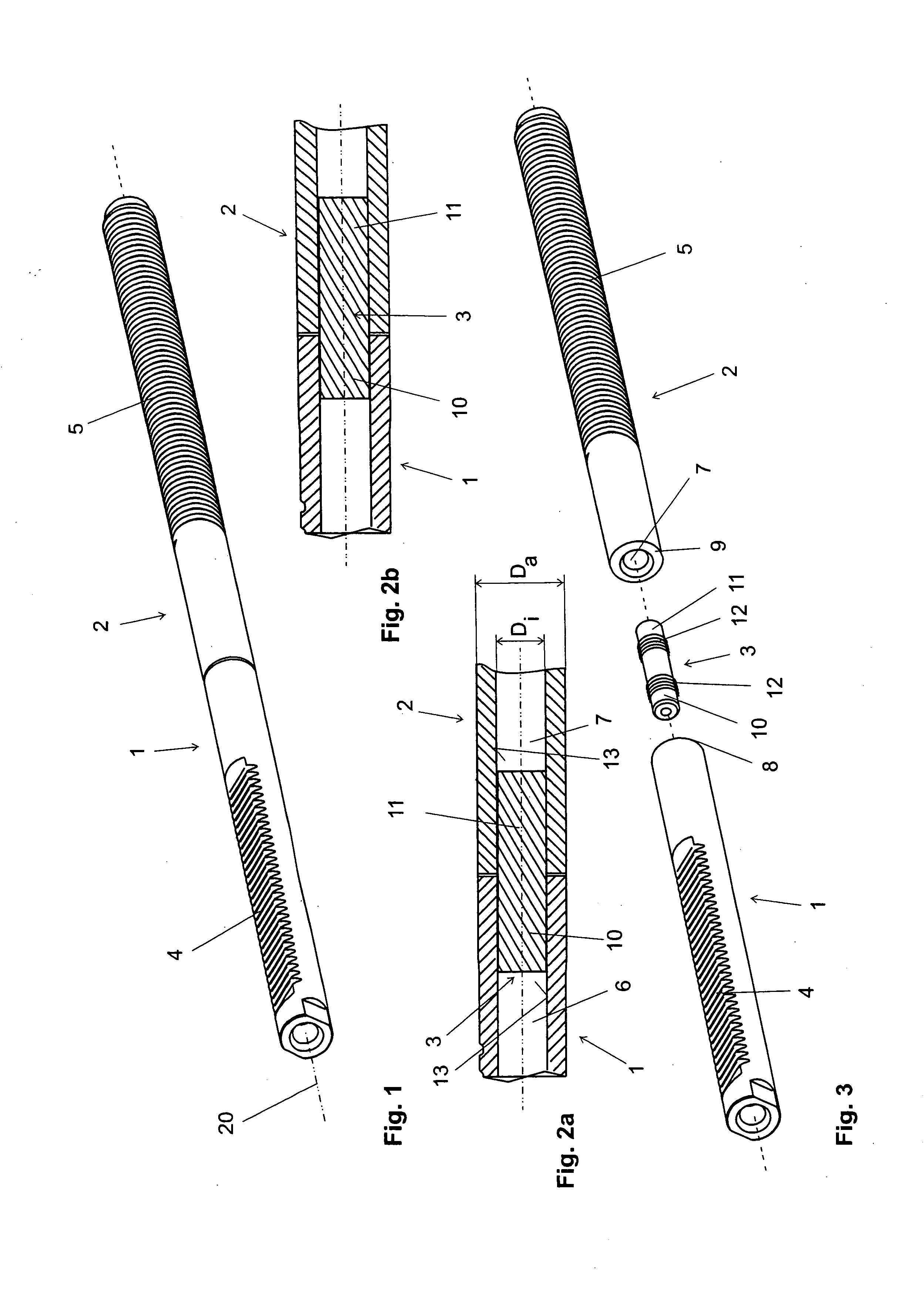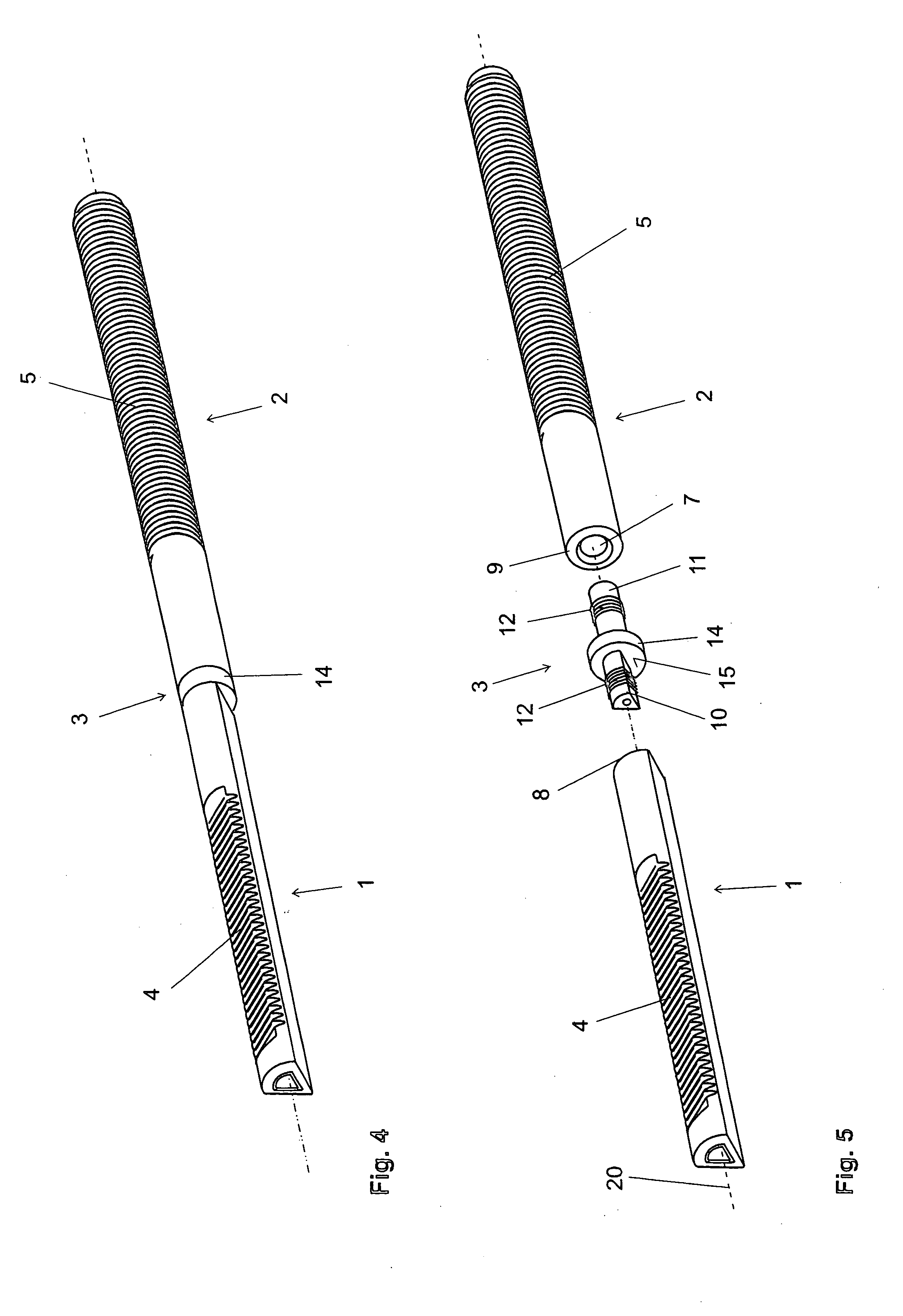Toothed rack or threaded rod
a technology of threaded rods and racks, which is applied in the direction of toothed gearings, power driven steering, portable lifting, etc., can solve the problems of production expenditures and restrictions with respect to the implementation of parts to be connected, and achieve the effect of facilitating production
- Summary
- Abstract
- Description
- Claims
- Application Information
AI Technical Summary
Benefits of technology
Problems solved by technology
Method used
Image
Examples
Embodiment Construction
[0036]A first embodiment of a toothed rack according to the invention, for example for application in a steering mechanism of a motor vehicle, will be explained in the following with reference to FIG. 1 to 3. The toothed rack comprises a first and a second rod-shaped part 1, 2 connected with one another by means of a connection part 3. The first and the second rod-shaped part 1, 2 and the connection part 3 have a common longitudinal axis 20 (=the longitudinal axis of the toothed rack). The first rod-shaped part 1 has as a function element the toothing 4 of the toothed rack. The toothing 4 extends over a portion of the entire longitudinal dimension of the toothed rack and this portion of the longitudinal dimension of the toothed rack forms thus a first function region of the toothed rack.
[0037]The second rod-shaped part has as a function element a threading 5, for example for a ball-type threaded drive. This extends over a portion of the entire longitudinal dimension of the toothed r...
PUM
 Login to View More
Login to View More Abstract
Description
Claims
Application Information
 Login to View More
Login to View More - R&D
- Intellectual Property
- Life Sciences
- Materials
- Tech Scout
- Unparalleled Data Quality
- Higher Quality Content
- 60% Fewer Hallucinations
Browse by: Latest US Patents, China's latest patents, Technical Efficacy Thesaurus, Application Domain, Technology Topic, Popular Technical Reports.
© 2025 PatSnap. All rights reserved.Legal|Privacy policy|Modern Slavery Act Transparency Statement|Sitemap|About US| Contact US: help@patsnap.com



